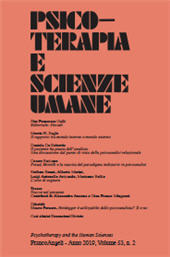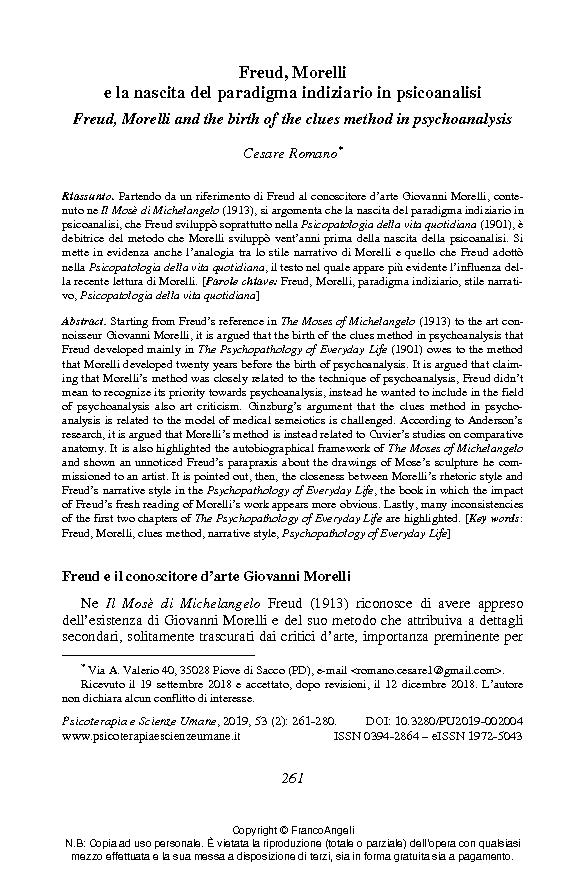Freud, Morelli e la nascita del paradigma indiziario in psicoanalisi
261-280 p.
Partendo da un riferimento di Freud al conoscitore d'arte Giovanni Morelli, contenuto ne Il Mosè di Michelangelo (1913), si argomenta che la nascita del paradigma indiziario in psicoanalisi, che Freud sviluppò soprattutto nella Psicopatologia della vita quotidiana (1901), è debitrice del metodo che Morelli sviluppò vent'anni prima della nascita della psicoanalisi. Si mette in evidenza anche l'analogia tra lo stile narrativo di Morelli e quello che Freud adottò nella Psicopatologia della vita quotidiana, il testo nel quale appare più evidente l'influenza della recente lettura di Morelli. [Testo dell'editore]
Starting from Freud's reference in The Moses of Michelangelo (1913) to the art connoisseur Giovanni Morelli, it is argued that the birth of the clues method in psychoanalysis that Freud developed mainly in The Psychopathology of Everyday Life (1901) owes to the method that Morelli developed twenty years before the birth of psychoanalysis. It is argued that claiming that Morelli's method was closely related to the technique of psychoanalysis, Freud didn't mean to recognize its priority towards psychoanalysis, instead he wanted to include in the field of psychoanalysis also art criticism. Ginzburg's argument that the clues method in psychoanalysis is related to the model of medical semeiotics is challenged.
According to Anderson's research, it is argued that Morelli's method is instead related to Cuvier's studies on comparative anatomy. It is also highlighted the autobiographical framework of The Moses of Michelangelo and shown an unnoticed Freud's parapraxis about the drawings of Mose's sculpture he commissioned to an artist. It is pointed out, then, the closeness between Morelli's rhetoric style and Freud's narrative style in the Psychopathology of Everyday Life, the book in which the impact of Freud's fresh reading of Morelli's work appears more obvious. Lastly, many inconsistencies of the first two chapters of The Psychopathology of Everyday Life are highlighted. [Publisher's text]
Fa parte di
Psicoterapia e scienze umane : LIII, 2, 2019-
Articoli dello stesso fascicolo (disponibili singolarmente)
-
Informazioni
Codice DOI: 10.3280/PU2019-002004
ISSN: 1972-5043
PAROLE CHIAVE
- Freud, Morelli, paradigma indiziario, stile narrativo, Psicopatologia della vita quotidiana
- Freud, Morelli, clues method, narrative style, Psychopathology of Everyday Life



